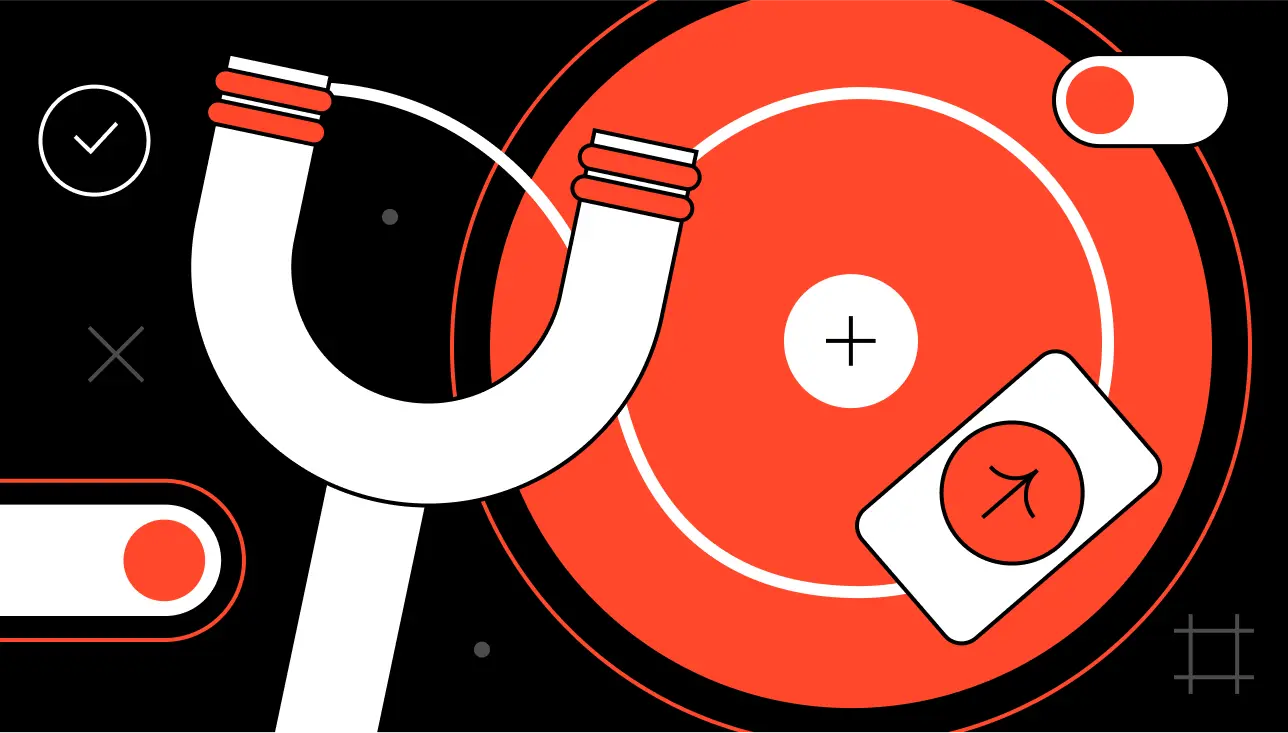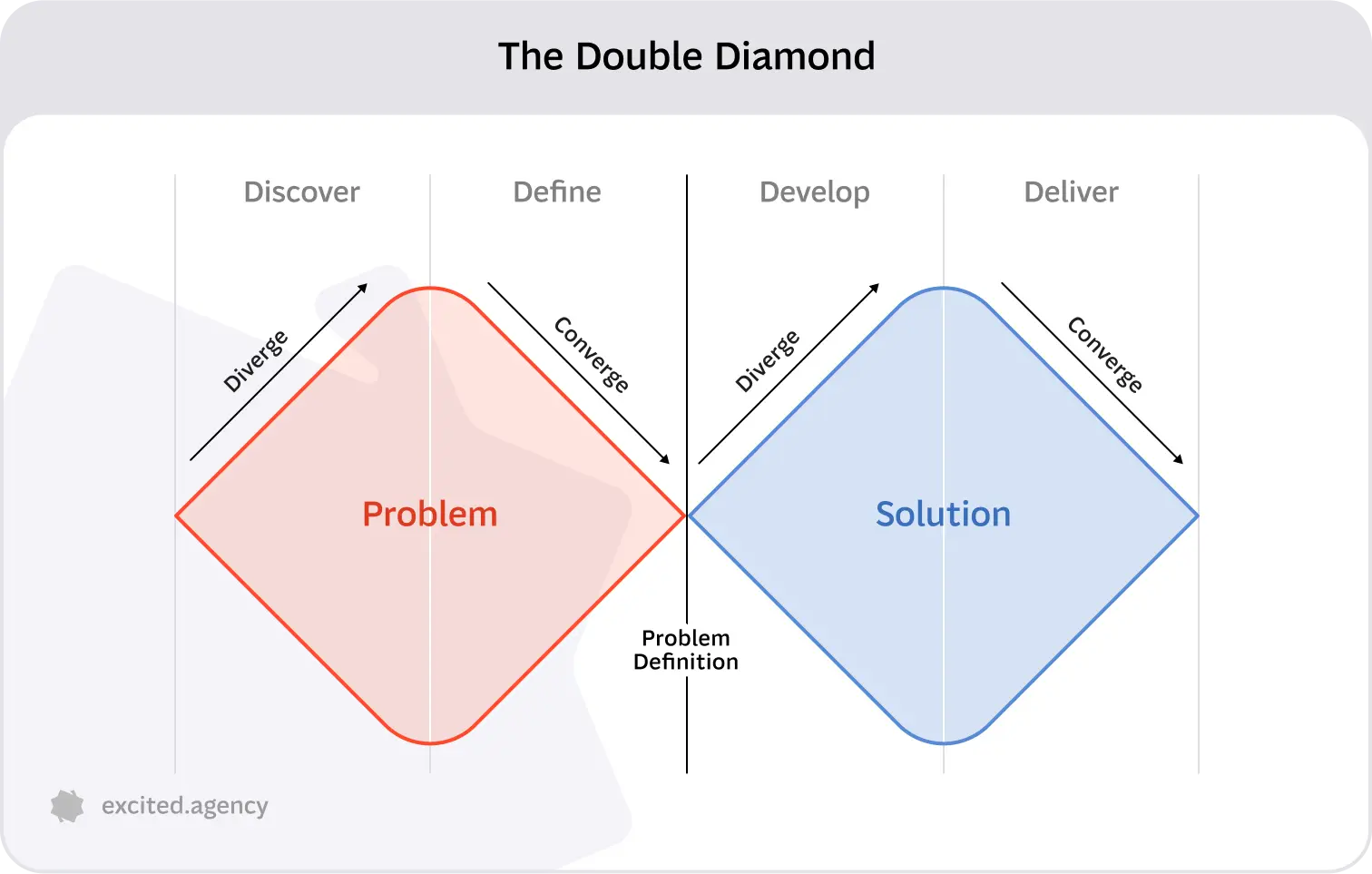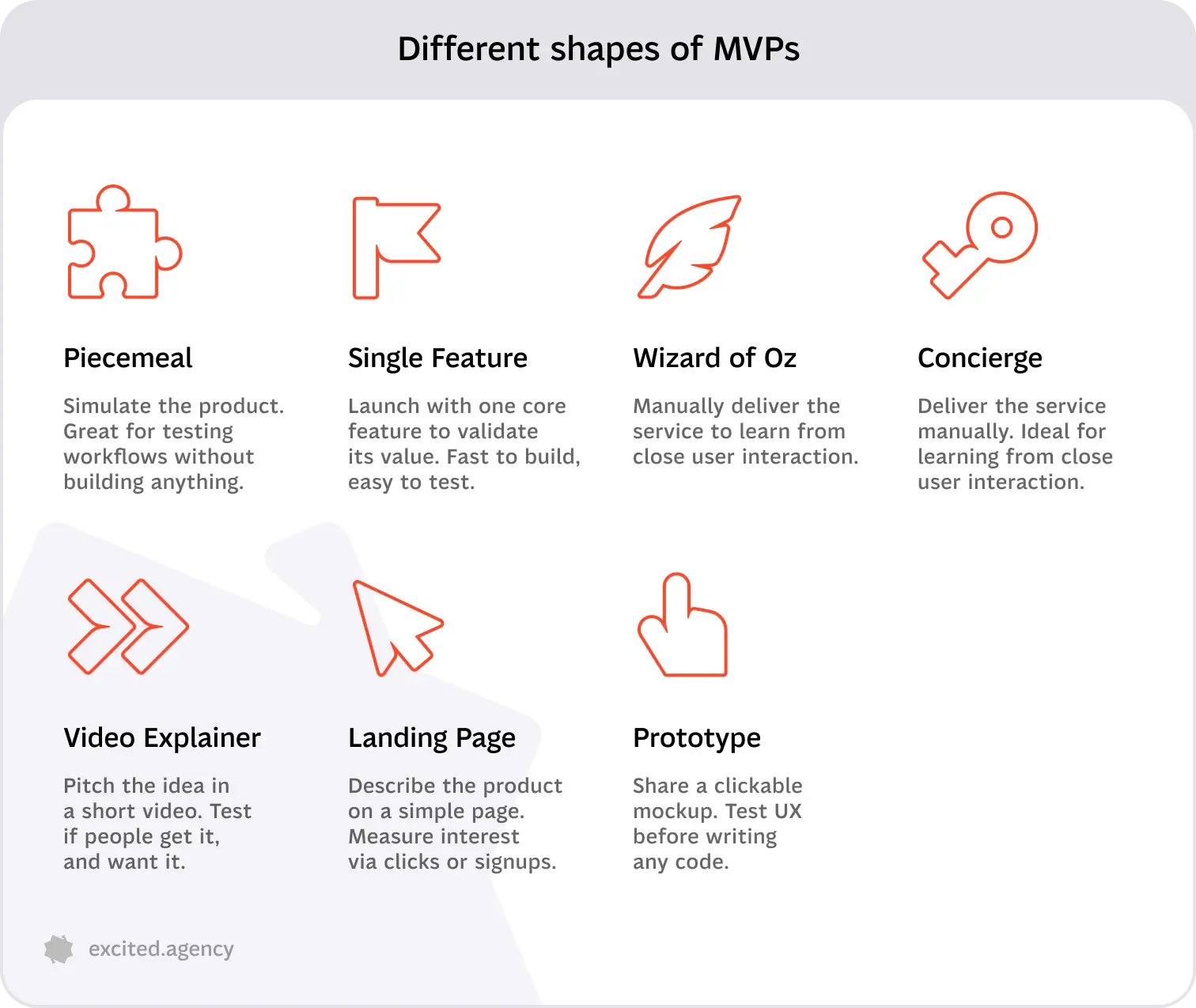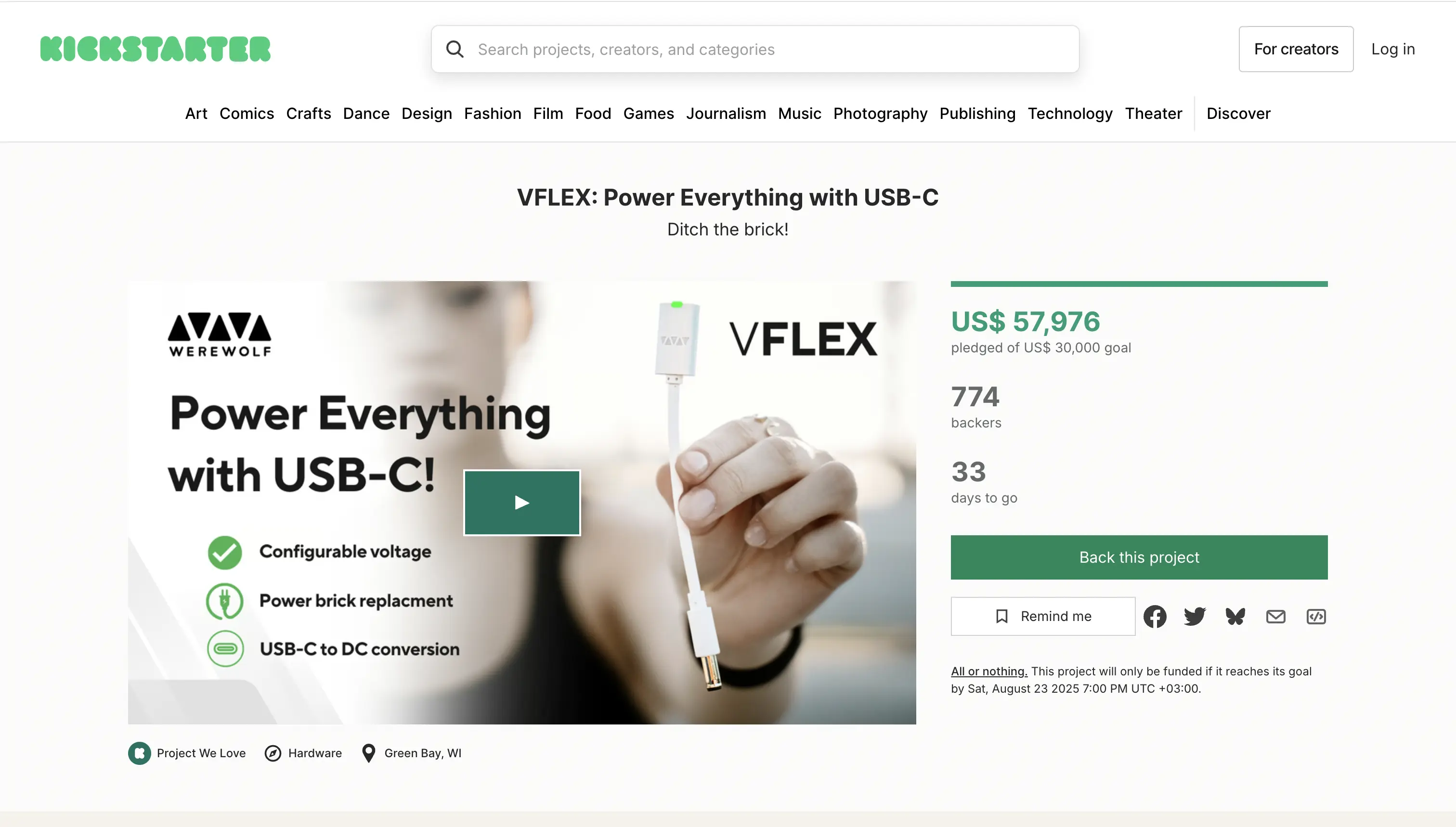Before building a new product, you need to know if it’s worth it. We're sure you've head the whole "9 in 10 startups fail" shtick. Now let's make sure you get into the other 10%. To do that, you build an MVP and test it.
The goal of an MVP test is to validate your idea early using a minimum viable product.
Instead of launching a full product, you release a simple version to test a key assumption. This gives you quick user feedback, helping you understand whether your idea solves a real problem for your target audience.
However, it's easier said than done. In this article, we’ll explore the best MVP testing methods, tools, and strategies to test your MVP and move forward with confidence.

What's MVP validation
MVP validation is the process of proving that your product idea has real demand, before you invest in building the full version of the product. Trust us, not all ideas (at least in their original shape) are worth your time and life savings.
However, an MVP is not the only way to validate an idea. Aside from MVP, there's also POC and prototypes.
It’s not about polish. It’s about learning. The goal of MVP testing is to confirm that users need what you’re offering. That means testing real behavior, not opinions.
A good minimum viable product focuses on one core assumption. If that fails, the rest doesn’t matter. Validation helps you avoid wasting time and money by building something no one wants. It also helps you make rational decisions, and avoid growing emotionally attached to your idea.
Why test a minimum viable product
Testing an MVP helps you validate assumptions before committing serious time and budget. It’s a low-risk way to check if your product idea has a future.

Early MVP testing prevents you from building based on internal bias. It gives you user feedback, shows whether your target audience is interested, and helps ensure product-market fit.
In short: test first, build smarter.
What's an effective MVP
An effective minimum viable product delivers just enough value to test one key assumption. It’s not about features. It’s about focus.
A strong MVP:
- Solves one problem for your target audience
- Lets you quickly test your MVP UX with real users
- Prioritizes learning over perfection
The goal isn’t to impress — it’s to validate your idea. And do it as fast as possible.
Best MVP testing methods
MVP testing isn’t just about building something simple. It’s a structured way to validate your idea, test assumptions, and make informed product decisions. Here’s how the MVP process typically unfolds:
Define Your MVP Scope
Before building, decide what your minimum viable product will include — and what it won’t. Focus on one feature or problem that reflects your product’s core value. Avoid overbuilding. The goal is to deliver just enough for meaningful user feedback.
Ask: “What’s the smallest version of this product that still solves a real user problem?”
Define MVP success
You can’t validate your idea without knowing what success looks like. Set clear, measurable goals like:
- Email signups
- Click-through rates
- Feedback volume
- Usage patterns
Tie these metrics to behavior, not just opinions. A “that sounds cool” from a user isn’t enough — you want proof that they’ll actually engage with your product or service. While there are different kinds of proof, nothing beats a financial commitment.
It's paramount to understand what it is exactly you want to learn. Building an MVP just for the sake of it doesn't work. Which one of your assumptions is the biggest and riskiest?
Pick the Right MVP Testing Methods
The way you test depends on what you’re building and who your target audience is. Some MVP testing techniques are better for testing demand (like landing pages or ads); others are better for testing experience (like prototypes or concierge MVPs). We’ll explore these in more detail in the next sections.
It's always best to get a combination of qualitative and quantitative testing methods. Qualitative findings tell you real stories, while the quantitative ones give you an idea of how common these stories are.
{{case-study}}
Test, Learn, and Iterate
Once your MVP is live, observe how real users interact with it. Treat user feedback as direction, not gospel — it’s your job to find patterns and refine the product accordingly. Rapid iteration is key to reaching a successful MVP.
MVP testing is the beginning of the learning loop — not the end of the journey.
Kinds of MVPs there are
Different MVP testing methods are suited to different business goals, industries, and stages of development. Some methods may not even include a product at all. Here are the most effective and widely used types of minimum viable products, with guidance on when and why each works.

Piecemeal MVP
A piecemeal MVP relies on assembling existing tools and services to replicate the experience of a real product without writing any custom code. For example, you might use Notion for content, Zapier for automation, and Typeform for data collection, as long as it gets the job done.
This method is ideal for startups looking to test their MVP without investing in engineering resources. It’s especially useful in B2B or operations-heavy contexts, where building even a basic backend could be expensive and time-consuming.
By stitching together existing platforms, you can focus on validating workflows, uncovering friction points, and understanding how your target audience interacts with the core service.
Single Feature MVP
A single-feature MVP delivers just one core function — the smallest version of a product that still provides standalone value. The idea is to isolate the product’s most essential feature and see if users care enough to try it, use it, or pay for it.
This approach is common in early SaaS and mobile app development, where time-to-market is critical. It allows teams to quickly test whether their product idea resonates with users, without the noise or distraction of additional features.
It’s also an excellent choice for identifying usability issues or confirming whether the primary use case holds real-world value.
Wizard of Oz MVP
In a Wizard of Oz MVP, the product appears fully functional to the user, but the backend is manually operated by the team. For example, an AI chatbot may appear automated, but all replies are crafted by humans.
This type of MVP helps validate assumptions about demand, workflow, and user experience before investing in technical implementation or automation. It’s commonly used for products that involve AI, recommendation systems, or complex logic that would be expensive to build without guaranteed interest.
The Wizard of Oz approach allows you to collect real usage data and behavior while retaining full control and flexibility in how the product behaves.
Concierge MVP
A concierge MVP is fully manual and transparent — users know there’s a human behind the process. Instead of simulating automation, you provide a high-touch, white-glove version of your product or service.
This method is particularly effective for uncovering deep user needs and emotional drivers. Because you’re interacting directly with users, you can observe their behavior, ask follow-up questions, and iterate in real time.
Concierge MVPs are often used in premium services, coaching, or early B2B solutions where trust, personalization, and insight are more valuable than automation.
Explainer Video MVP
An explainer video MVP presents your concept visually before you’ve built anything. It describes what the product idea is, how it works, and what value it delivers — typically in under two minutes.
The classic example is Dropbox, which validated demand for its product using a simple demo video. Thousands signed up for a product that didn’t yet exist, proving market interest and shaping the future build.
This type of MVP is ideal for testing clarity and appeal. It’s especially effective for validating assumptions about whether potential users understand your solution and are excited by the idea.
Landing Page MVP
A landing page MVP is a simple webpage that communicates your value proposition and invites users to take a specific action — signing up, joining a waitlist, or expressing interest.
You can run ads or direct traffic to the page and track metrics like bounce rate, click-through rate, or form submissions. It’s a fast and inexpensive way to test positioning, gauge interest in your product, and segment your target audience.
This method works well for both consumer and B2B products and can be set up in hours using tools like Webflow, Carrd, or Unbounce.
Prototype MVP
A prototype MVP involves creating a clickable design — usually built in tools like Figma, or Adobe XD — to simulate the user experience of the product. It includes screens, flows, and interactions, but no working backend.

This approach is widely used in UX design and early-stage product development. It helps teams uncover usability issues, validate navigation and flow, and gather user feedback without committing to engineering work.
Prototype MVPs are particularly useful when you need to test how intuitive your product is or when pitching ideas to investors or stakeholders.
MVP testing strategies
Once you’ve chosen the right MVP type, the next step is figuring out how to test it. The following MVP testing methods focus on getting real user reactions, measuring interest, and uncovering insights that will help you decide whether to move forward or pivot.
Crowdfunding
Platforms like Kickstarter and Indiegogo allow you to test your product idea with a broad audience by asking for real commitments in the form of pre-orders or financial support.
This approach works well for physical products, hardware, or creative projects. A successful campaign not only validates demand but also builds early community and brand visibility.
Why use it:
- Measures actual willingness to pay
- Creates urgency and visibility
- Helps refine messaging and positioning

Pre-orders & sing-ups
A simpler alternative to crowdfunding is offering early sign-ups or pre-orders through a landing page MVP. You can measure interest in your product by tracking how many users are willing to leave their email, join a waitlist, or even pay upfront.
Run A/B tests with different versions of the page to see what messaging works best — a form of split testing that helps optimize your pitch.
Why use it:
- Fast and low-cost
- Great for testing pricing, positioning, and offers
- Works well for digital products or SaaS
Customer interviews
One of the most direct MVP testing techniques, interviews help you dig into user motivations, behaviors, and pain points.
These are especially valuable in the early stages of product development, before you've committed to a specific feature set. Use them to test whether your assumptions match reality and to identify what a successful MVP should actually solve.
Why use it:
- Reveals what users really need (not just what they say)
- Helps prioritize features
- Useful for both B2C and B2B startups
Interviews are essential in making sure you understand the problem. It's absolutely essential that before attempting to solve a problem, you learn about it first.
Ads
Running targeted ads on platforms like Facebook, Google, or LinkedIn allows you to test messaging, value propositions, and audiences before building anything.
You can drive traffic to a landing page MVP, waitlist, or even a survey — giving you data on click-through rates and conversion. This helps identify what aspects of your product or service resonate most with your target audience.
Why use it:
- Ideal for rapid market testing
- Lets you test multiple versions at once
- Helps validate interest across different customer segments
Bottom line
No matter how promising your product idea is, guessing is a risky way to build. The real value of MVP testing lies in learning — fast, early, and directly from your target audience.
A strong minimum viable product isn’t just about launching quickly, it’s about validating assumptions before committing to a full build. Whether you choose a prototype, a landing page, or a concierge MVP, the goal is the same: gather user feedback, test your core assumptions, and find out if your product is likely to work in the real world.
The best founders and product teams treat testing as part of the development process, not something you do after launch. So if you’re ready to take your MVP to the next level, don’t wait — test it, validate it, and build what people actually want.
Discover how we helped build a full-fledged product from an MVP.

Frequently Asked Questions
Heading 1
Heading 2
Heading 3
Heading 4
Heading 5
Heading 6
Lorem ipsum dolor sit amet, consectetur adipiscing elit, sed do eiusmod tempor incididunt ut labore et dolore magna aliqua. Ut enim ad minim veniam, quis nostrud exercitation ullamco laboris nisi ut aliquip ex ea commodo consequat. Duis aute irure dolor in reprehenderit in voluptate velit esse cillum dolore eu fugiat nulla pariatur.
Block quote
Ordered list
- Item 1
- Item 2
- Item 3
Unordered list
- Item A
- Item B
- Item C
Bold text
Emphasis
Superscript
Subscript


